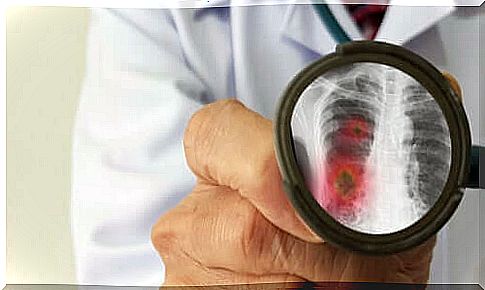This Is How The Coronavirus Infects Lung Cells
The study published March 3 in the journal Intensive Care Med sheds new light on how the coronavirus works in lung cells. She also speculates that SARS-CoV-2 could enter the body through the intestine.

Information gathered so far indicates that the most visible effect of coronavirus infection is disease of the lung cells. Although COVID-19 appeared only three months ago, several scientific studies are now available that have elucidated certain aspects of the virus that causes the disease.
So far, all indications are that the virus is spread through droplets of saliva or mucus from an infected person when they cough, sneeze or speak. If these droplets come in contact with another person’s eyes, nose or mouth, the virus enters their body.
Once inside the body of the newly infected person, the droplets quickly travel to the back of the nostrils and to the lining of the throat. Then a kind of “hook” occurs between the virus and the recipient’s cells. SARS-CoV-2 then begins the infectious journey which leads to health problems.
The virus hangs on
The coronavirus has spike-like proteins all over its surface. They cling to the cell membranes they encounter and invade them with their genetic material. This causes the body itself to start helping the virus to multiply and prevent the immune system from working as it should.
This way, copies of the virus appear, then new copies, and so on. Each cell eventually bursts, releasing viral particles that infect neighboring cells. Gradually, the coronavirus progresses from the throat to the bronchi.
When SARS-CoV-2 or the coronavirus reaches the lungs, the lining of the lungs becomes inflamed. When this happens, the alveoli, which are like little air sacs, can be damaged. Inflammation causes the alveoli to work harder to bring oxygen into the blood and expel carbon dioxide.
Inflammation, coupled with a deterioration in oxygen flow, can cause the lungs to fill up with fluid, pus, and dead cells. This could lead to an infection: pneumonia. In turn, pneumonia eventually leads to acute respiratory distress syndrome. At this point, you can only breathe using a machine.

Coronavirus and lung cells
A study published in the journal Intensive Care Med has further described the process by which the coronavirus attaches to lung cells. They used a computer model to do the research.
According to their findings, the virus can adhere to lung cells because the peaks it has – sharp proteins – are very similar to a receptor – ACE2, which is also a protein – found in human lung cells. This similarity makes them “perfectly suited”, so to speak.
Scientists compare this affinity to a key and its lock. It would also explain why this disease is so contagious. Researchers say the virus recognizes this receptor better on lung cells and is therefore easily transmitted. Metaphorically speaking, it is as if the lock attracts the key and vice versa.

Lung problems
Many wonder why this virus attacks the lungs in particular. A first answer is that these organs are particularly vulnerable to all kinds of inhaled viruses. However, research from the Intensive Care Med team highlights that certain biological factors are also at play.
Scientists have detailed that 83% of the cells which serve as a “lock” for this “key” that is the virus, are located in the pulmonary alveoli. Therefore, these lung cells facilitate viral invasion. This is where SARS-CoV-2 is best suited.
However, the study also points out that these lung cells are not the only ones corresponding to the coronavirus. There are other organs that have similar “locks”, namely the heart, kidneys, intestine and endothelium. Scientists believe that the intestine, in particular, is also an important entry site for the coronavirus.
These data would support the hypothesis that the pandemic started with the consumption of certain foods in the Wuhan market. If this is proven, it would be of great importance, as it would reveal another route of infection and would be very relevant in containing the problem.
What is the contribution of these results to the fight against the coronavirus?
As we face a new problem and a pandemic for which there are not many answers, any scientific breakthrough is important. Research groups around the world are sharing their results, almost in real time, to move faster. Knowing the mechanism of lung damage is a tool that helps doctors know how to treat complications from coronavirus.









